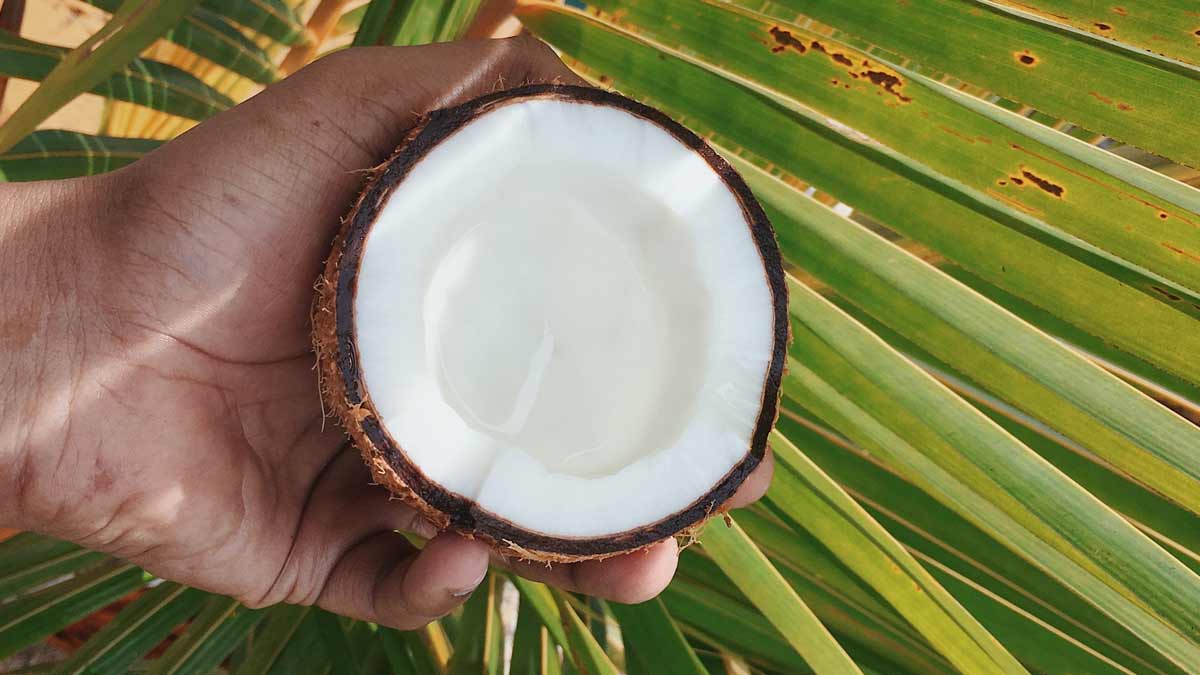
Sodium lauroamphoacetate
What Is Sodium Lauroamphoacetate?

Sodium lauroamphoacetate is a yellow substance derived from coconut.[1] Coconuts grow on the cocos nucifera, or coconut palm tree, around the world in lowland tropical and subtropical areas with low annual precipitation.[2,3] Widely cultivated, healthy coconut palms produce 50 nuts per year, and the tree can be used to produce everything from food and drink to fibers, building materials, and natural ingredients.[4,5]
It is also known as lauroamphoacetate and lauroamphoglycinate. It has a molecular formula of C18H34N2NaO3+.
What Does Sodium Lauroamphoacetate Do in Our Products?

Sodium lauroamphoacetate is a surfactant that allows water, oil, and dirt to mix, allowing things to become clean. It is also a foam booster and conditioning agent.[6] It can be found in personal care products such as hair conditioners, body wash, shampoo, facial cleansers, foaming cleansing products, and other items.[7,8]
Why Puracy Uses Sodium Lauroamphoacetate
We use sodium lauroamphoacetate as a surfactant and cleanser. It is amphoteric, meaning it can function as a base and an acid.[10] Research shows the ingredient is typically not a skin irritant or sensitizer.[11,12]
How Sodium Lauroamphoacetate is Made
Sodium lauroamphoacetate is made by reacting aminoethylethanolamine (AEEA) with fatty acyl compounds. Lauric acid is one of its starting materials, which is derived from the distillation of coconut fatty acids found in coconut oil. Aminoethylethanolamine and chloroacetic acid are two other components; they come from ethylene gas and chlorine gas, respectively.[9]
Is Sodium Lauroamphoacetate Safe?

Sodium lauroamphoacetate is commonly used in personal care products because it is gentle on the skin and hair. It is also biodegradable and non-toxic, making it a safe choice for consumers and the environment.
The Cosmetic Ingredient Review (CIR) Expert Panel, an independent group of scientists that evaluates the safety of cosmetic ingredients, has concluded that the ingredient is safe for use in cosmetics at concentrations of up to 30%.
Meanwhile, the Environmental Working Group (EWG) gave the zwitterionic surfactant a rating of 1, which means it’s low on the hazardous scale. It scores low on common concerns such as:
- Cancer
- Allergies and immunotoxicity
- Developmental and reproductive toxicity
- Use restrictions.
Safety on General Health

It’s also used by people of all ages, including babies and children, which is why you can find this ingredient in baby shampoos as a cleansing agent. People with sensitive skin and hair can use products with this ingredient because it is mild, non-irritating, and non-sensitizing.
If you have dry, damaged, and color-treated hair, sodium lauroamphoacetate can help clean without stripping off natural oils. It can also condition the hair for better manageability.
Environmental Safety

Sodium lauroamphoacetate is biodegradable and non-toxic to the environment. It is also readily available in food-grade quality, making it a safe choice for use in personal care products.
Other surfactants such as sodium laureth sulfate (SLS) and sodium lauryl sulfate (SLES) are known to be toxic to aquatic life.
Sodium Lauroamphoacetate vs Common Surfactants

Sodium lauroamphoacetate is a much gentler surfactant than SLS and SLES. SLS and SLES are known to be irritating to the skin and eyes, and they can strip the skin and hair of their natural oils.
SLS and SLES can cause a variety of skin problems, including redness, itching, dryness, and irritation. They can also cause eye irritation and eventually damage.
Sources
[1] Cosmeticsandtoiletries.com
[2] Pennsylvania State University
[3] Cosmeticsinfo.org
[4] University of Hawaii at Manoa College of Tropical Agriculture & Human Resources
[5] U.S. National Plant Germplasm System
[6] Cosmeticsandtoiletries.com
[7] European Commission
[8] Environmental Working Group
[9] Cosmeticsandtoiletries.com
[10] Environmental Working Group
[11] Foti, C. et al., “Aminoethylethanolamine: a new allergen in cosmetics?” Contact Dermatitis (2001) Sep;45(3):129-33
[12] A. Mehling, M. Kleber and H. Hensen, “Comparative studies on the ocular and dermal irritation potential of surfactants,” Food Chemistry and Technology 45(5) 747–758 (2007)


























